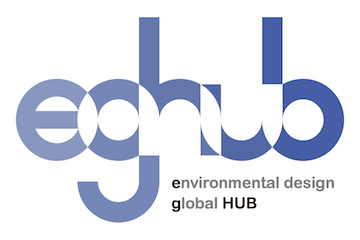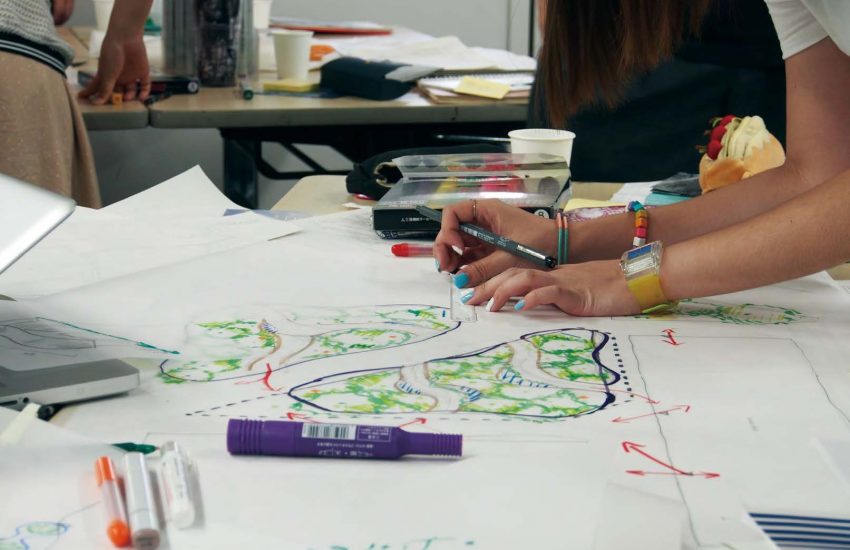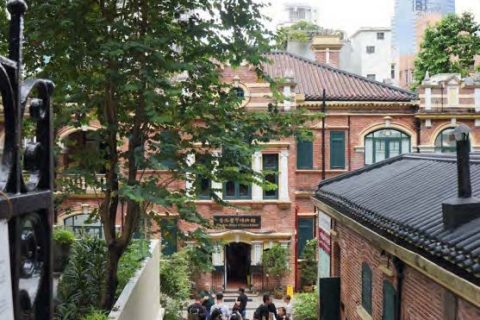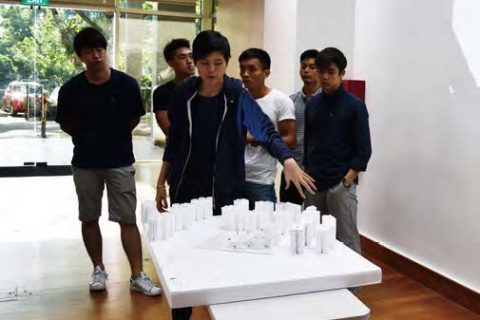Organized by Environmental Design Global Hub, Faculty of Design in Kyushu and Technological and Higher Education Institute of Hong Kong: THEi
On 28 July 2016, eight students from the Graduate School of Design, Kyushu University, and eight second year students from Landscape Design in the Faculty of Design and Environment, Technological and Higher Education Institute of Hong Kong (THEi) participated in this joint studio. This joint studio was part of the “Strategic Architect Project” for graduate studies in Design Strategy and the “Environmental Heritage Project 1” for graduate studies in the Environment and Heritage Design Course. As for THEi, their participation in this Design Workshop was part of a series of field trip programs. This opportunity was introduced by Mr. Hiroyasu Amano from the Local Knowledge Platform LLC.
The task of the workshop involved the design of a campus facility, which is scheduled to be constructed at the main gate area of our campus in 2017. This facility is called the Design Common (cafeteria / exchange complex), designed by K. Tanoue. In the workshop, students were divided into 4 groups which consisted of 2 students from Kyushu University and THEi respectively. Students from two sides worked together throughout the entire workshop. The program started in the morning with the introduction from both schools. Thereafter, the groups carried out field surveys and followed by discussions related to the concepts and plans in afternoon. Draw on tracing paper with some map and up to 2 sheets of A1 size, the students presented their work in front of faculty members in the late afternoon. At the end, a farewell party was held to deepen friendship.
While there are differences in term of English compe- tencies, the Japanese students were able to use English and sketches etc. to communicate with the Hong Kong students to formulate the plan. Some Hong Kong students reflected that he/she had been able to acquire different perspectives from the Japanese students. As a general impression, sev- eral educational effect such as collaborative learning and strengthening of English compentencies was observed. Besides, it was a good opportunity to form relationships between the field of Landscape Design and Environmental Design in the two universities.
Finally, appreciations should be given to Ms NG, Silvia who leads THEi groups. In addition, to Mr. Amano and Mr. Enomoto from Local Knowledge Platform LLC as they had provided coordination and connection for the universities.



